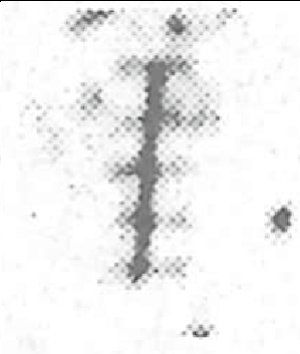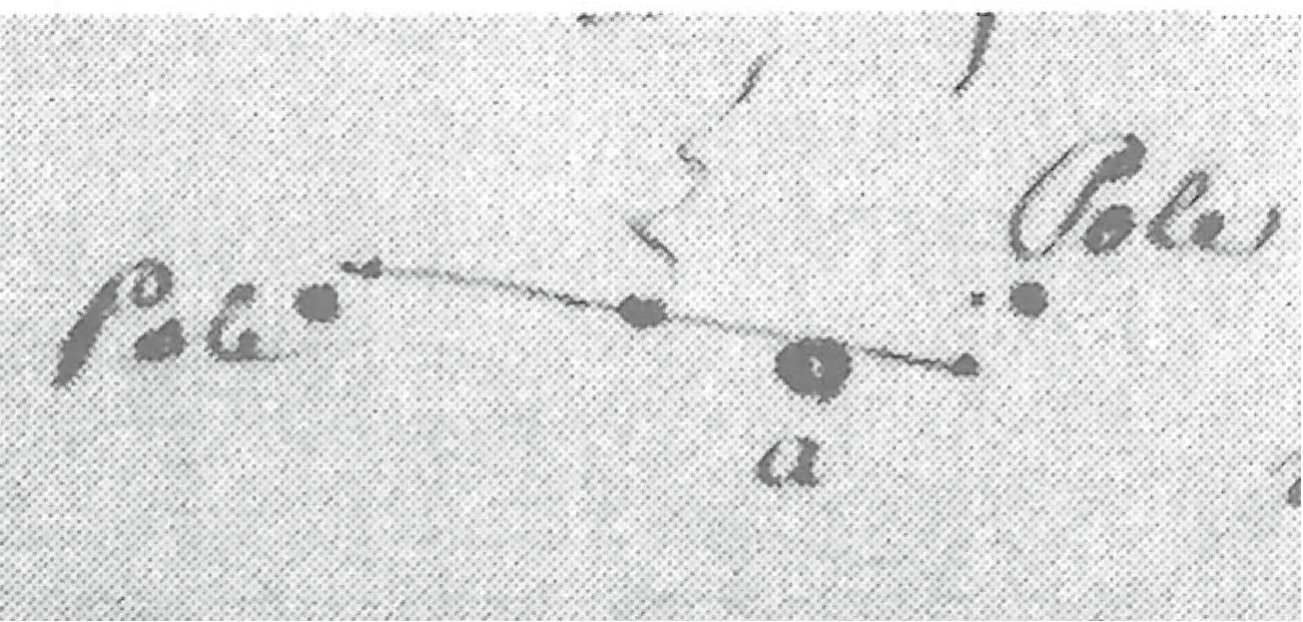Julius Plücker to Faraday 4 January 1850
Dear Sir!
My best thanks for your kind letter of the 11th of December last since1. Since - I think so at least - I got a satisfactory explication of all the questioned phenomena, discovered by you and by myself. This explication is founded on the principles exposed in my last letter2. The indications already given by me, are written down under the preoccupation of my mind, that there ought to be in crystals, brought between the two poles, a conflict of an attractif and a repulsif power, as it is the case with charcoal. But we dont want such a coexistence of two opposite actions. In magnetic crystals tis allways a co<bar>mon magnetic attraction, producing the known effects; in diamagnetic crystals tis allways a diamagnetic repulsion. The freely suspended magnetic crystal will allways go to the pole, the diamagnetic away from it: but, when the crystal is obliged to turn round a vertical line, the forces producing the rotatory motion of the crystal, deduced by mechanic law from the original ones, will, by different distance from the pole, act in an opposite way.
I adopt the views you explained 2439, 24403. There is no difference at all between Magnetism and Diamagnetism, only the kind of inducing them is the opposite one in both cases. In diamagnetic bodies the “coercitif force” is greater than in magnetic ones. From that I deduced by new experiments, the known observations made by charcoal. Belonging to crystals the only hypothesis I adopt is, that such a crystal take magnetic polarity with different facility in different directions if it is a magnetic crystal, and diamagnetic polarity if it is a diamagnetic one. The molecules of positif crystals, when magnetic or diamagnetic by induction, will have the line joining their poles (completely or at least by preference) directed parallel to the axis; in negatif crystals this line is perpendicular to the optic axis. The turmaline for instance may be represented by lines of molecules, parallel to its axis, having their poles perpendicular to these lines, and may be imitated by a row
 (a line) of small pieces of iron wire, arranged in this way
(a line) of small pieces of iron wire, arranged in this way
 .
If such a line is brought, like the crystal between the two poles, you will find by a co<bar>mon calculus, that the molecules are, according to their distance from the centrum, either repelled or attracted by the poles. Instead of the analytical results I have joined to my letter a figure, representing them.
.
If such a line is brought, like the crystal between the two poles, you will find by a co<bar>mon calculus, that the molecules are, according to their distance from the centrum, either repelled or attracted by the poles. Instead of the analytical results I have joined to my letter a figure, representing them.

The two curves are the geometrical locus for the neutral points, where is respecting to each of both poles neither attraction nor repulsion. The kind of action on the molecules of the line AB is indicated by arrows. From this figure you may deduce the phenomena exhibited by turmaline.
The figure remains the same when there is a diamagnetic repulsion of the crystallic molecules: the terms attraction and repulsion are only to be commutated.
Every magnetic molecule, having two poles, is attracted by the pole of the Electro-magnet but the calculus proves that, the distance of the two poles of the molecule being exceedingly small with relation to the distance from the pole of the Magnet, this attraction is to be neglected with relation (par rapport) to the power which gives to the molecule a rotatory motion, whatever may be the direction of this motion. Tis a case quite analogous to that of a compass needle, acted upon by the Earth.
That is the explication you asked from me in your last letter. Hence it follows, according to my experiments made by the balance, that even when the attraction of the mass of a crystal be not absolutely independent of the position of its axes, the difference of action cant produce the questioned effect.
But I fear, Sir, you will not return to you own first conception, which includes diamagnetic polarity, and therefore you will be against my theoretical views. Nevertheless you will think it right from my part, to defend them as long as I am not convinced of the contrary. Therefore let me conclude by in<<di>>cating a very easy experiment, which, according to me proves, against Weber’s theory, that the questioned diamagnetic polarity may be a permanent one, like in steel, even, for a short time, strong enough to be demonstrated by experiment[.]

Let a bar of bismuth be suspended in the common way between the two poles and by the torsion of the silk thread put against a piece of glass or copper (a). It will be, with greater force, retained in the same position, when repelled by the magnet, but, if you change by means of a gynotrope, the polarity of the magnet, the bar, in the first moment, will be decidedly attracted by the poles.
Yours | very truly | Plücker
Bonn the 4th of January
Address: A | Monsieur Faraday | &c &c &c | Royal Institution | London
Postmark: 1850
Bibliography
FARADAY, Michael (1846c): “Experimental Researches in Electricity. - Twenty-first Series. On new magnetic actions, and on the magnetic condition of all matter - continued”, Phil. Trans., 136: 41-62.
Please cite as “Faraday2249,” in Ɛpsilon: The Michael Faraday Collection accessed on